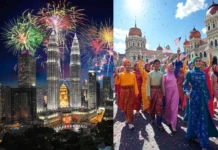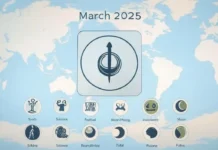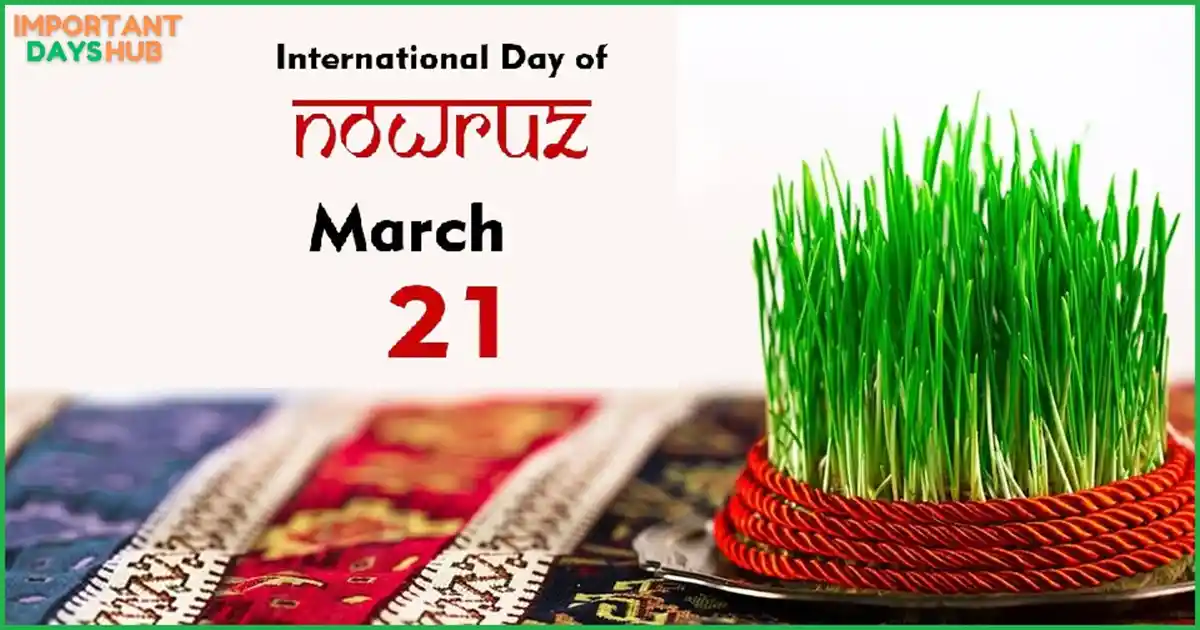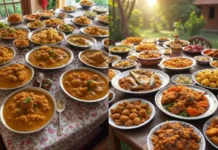International Day of Nowruz, observed on March 21st each year, celebrates the Nowruz festival, a centuries-old celebration marking the first day of spring and the start of the year in the Persian calendar. Nowruz, which means “new day” in Persian, is not just a holiday—it’s a vibrant cultural celebration that brings together people from diverse backgrounds, uniting them with shared traditions of renewal, growth, and hope for a prosperous year ahead.
Key Details of International Day of Nowruz
| Key Event | Details |
|---|---|
| Date | March 21st |
| Origin | Persia |
| Meaning | Renewal |
| Symbol | Rebirth |
| Duration | 13 Days |
| Celebration | Global |
| Tradition | Haft-Seen |
| Cultural Significance | Peace & Unity |
| Best Hashtags | Nowruz #InternationalDayOfNowruz #PersianNewYear #SpringCelebration #CulturalUnity |
History of International Day of Nowruz
Nowruz has been celebrated for over 3,000 years, originating in the Persian Empire. The festival marks the beginning of the vernal equinox, the moment when the day and night are of equal length, symbolizing balance and harmony. Historically, Nowruz is rooted in the traditions of Zoroastrianism, an ancient religion of Persia. Over time, it spread across a vast region, including Central Asia, the Caucasus, parts of the Middle East, and South Asia.
In 2010, the United Nations recognized March 21st as the International Day of Nowruz, acknowledging the festival’s significance in promoting peace, cultural diversity, and renewal. The celebration of Nowruz represents not only a time to mark the start of the new year but also a global call for peace, unity, and respect for cultural heritage.
Why Celebrate International Day of Nowruz?
- Cultural Unity and Diversity:
Nowruz is celebrated by millions of people from diverse cultures and countries, transcending borders and languages. It brings together communities, promoting harmony and mutual respect while honoring cultural diversity. - Symbol of Renewal and Hope:
Nowruz is all about fresh starts, renewal, and hope for the future. It serves as a reminder that no matter what challenges we face, every new day presents an opportunity for growth, positive change, and optimism. - Environmental Awareness:
As Nowruz coincides with the arrival of spring, it is also a celebration of nature’s rebirth. It encourages people to reconnect with the environment and take steps to care for the planet, from cleaning our homes to preserving nature.
How to Celebrate International Day of Nowruz
- Set Up a Haft-Seen Table:
One of the most cherished traditions of Nowruz is the Haft-Seen, a table decorated with seven symbolic items that begin with the Persian letter ‘S’. These items include sabzeh (sprouts), samanu (a sweet pudding), senjed (dried oleaster fruit), seer (garlic), seerkeh (vinegar), somāq (sumac), and serkeh (apple). These items symbolize various positive qualities such as rebirth, strength, patience, and health. - Participate in Traditional Dances:
Nowruz is often celebrated with lively music and traditional dances. If you’re familiar with the music of the culture, try learning some steps or even invite your friends to join in a group dance. It’s an excellent way to engage with the festivity’s lively spirit. - Feast with Family and Friends:
Similar to other major cultural celebrations, Nowruz features large feasts. Traditional dishes include sabzi polo (herbed rice) with fish, kuku sabzi (herb frittata), ash-e reshteh (a hearty soup with noodles), and sweets like baklava and saffron cookies. Sharing a meal with loved ones is an integral part of the celebration. - Spring Cleaning:
Just before Nowruz, it’s customary to clean your home, symbolizing the act of purging negativity and starting fresh. This tradition, known as Khaneh Tekani, serves as a way of physically and spiritually preparing for the new year. - Spend Time Outdoors:
Since Nowruz marks the beginning of spring, spending time outdoors is a popular way to celebrate. Go for a hike, enjoy a picnic, or simply appreciate the blooming flowers and greener landscapes as a sign of renewal and growth. - Light Bonfires (Chaharshanbe Suri):
On the eve of the last Wednesday before Nowruz, many people light bonfires as part of the Chaharshanbe Suri festival. Jumping over bonfires is believed to help purify the soul and bring good health and vitality in the coming year.
International Day of Nowruz on March 21st is not just a celebration of the new year, but a reminder of the universal themes of renewal, peace, and growth. Nowruz brings together millions of people worldwide, transcending cultural and geographical boundaries, and encourages everyone to look forward to the future with optimism and joy. Whether you’re celebrating with a traditional feast, setting up your Haft-Seen table, or simply enjoying the arrival of spring, Nowruz offers a unique opportunity to embrace life and community.
Frequently Asked Questions (FAQs)
What does Nowruz symbolize?
Nowruz symbolizes new beginnings, renewal, and the arrival of spring. It’s a celebration of life, hope, and the positive qualities of nature and humanity.
How long does the celebration last?
Nowruz celebrations traditionally last for 13 days, starting on the first day of spring (March 21st) and ending with Sizdah Bedar, a day to spend outdoors and enjoy nature.
What is the Haft-Seen table?
The Haft-Seen table is a key part of Nowruz, where seven symbolic items are displayed to represent various concepts like health, wealth, and rebirth. Each item starts with the Persian letter ‘S’ and carries a specific meaning.
Is Nowruz celebrated by all people?
Nowruz is celebrated by people from many cultural and religious backgrounds, particularly in Iran, Afghanistan, Central Asia, the Caucasus, parts of the Middle East, and even among diaspora communities worldwide.
What should I wear on Nowruz?
People often wear new clothes to signify the start of a new year and fresh beginnings. Traditional clothing may be worn, but it’s also common to dress in vibrant, colorful clothing that reflects the joy of the season.

























